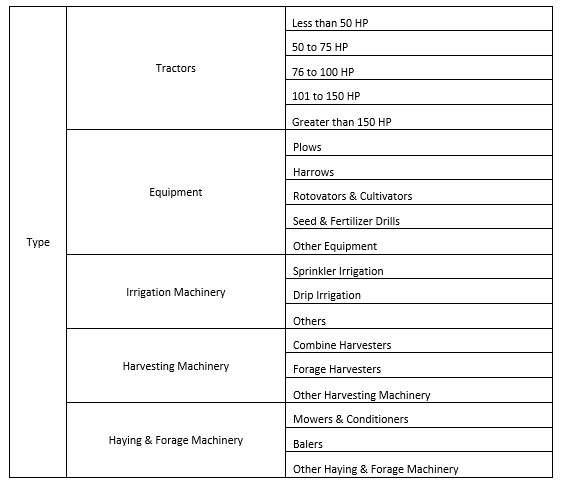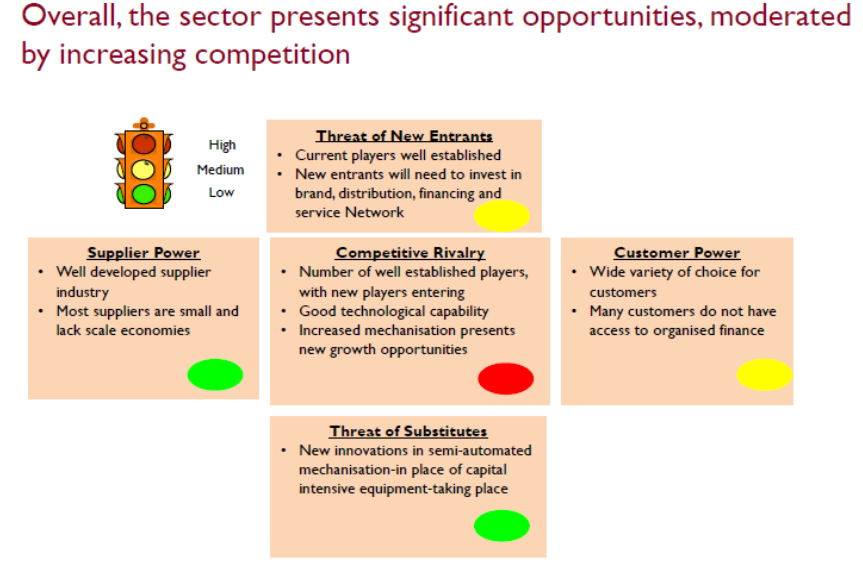Globally, agricultural machinery market is expected to reach USD 230-250 Billion by 2023. India's farm equipment market likely to grow to USD 18 billion by 2025 from the current USD 13 billion. Farm mechanization in India is in the initial stages, with the mechanization level ranging from 40-45%, which is very low compared to that in developed economies, where mechanization has reached beyond 90%.India's farm equipment market is 7% of the global market, with more than 80% of the value contribution coming from tractors. Over the last few years, there has been a considerable progress in agriculture mechanization. A significant proportion of farmers in the country have already started moving from using animate sources to mechanical equipment to power their farming activities. Mechanical equipment for various farm operations like tillage, sowing, irrigation, plant protection and threshing, etc., are generally being used by the farming community. As a result of increasing farm mechanization trends, the agricultural equipment market has witnessed strong growth in the past few years. This market is currently being driven by a number of factors such as easy availability of credit, government incentives, increasing agricultural productivity, emergence of contract farming, increasing rural incomes, etc.


The Indian agricultural machinery and equipment industry face high competition from renowned players like Mahindra & Mahindra Ltd., TAFE, Escorts Group, Sonalika, John Deere India operating in market place. The market is expected to become more consolidated in the years to come, as these major players in the market are expanding their business by adopting various strategies such as mergers & acquisitions, expansions, partnerships and product launches.

Some of the recent major Government initiatives in the sector are as follows :
EEPC INDIA has been at the forefronts of promoting India Agriculture Machinery exports with several initiatives as follows :